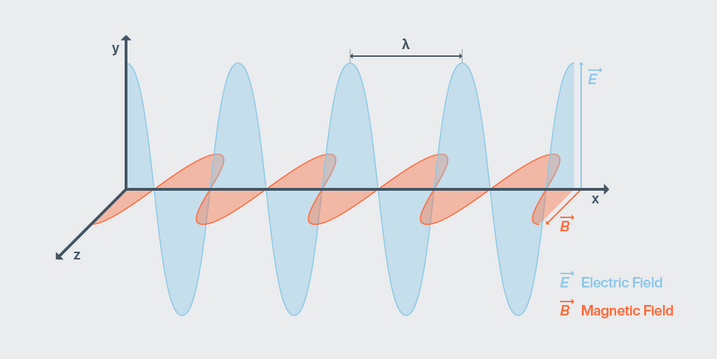Functional Principle of Radar Sensors

Industrial radar sensors from Pepperl+Fuchs can be used nearly maintenance-free in a wide range of applications and are highly resistant to interference such as rain, fog, wind, dust, or temperature fluctuations. This combination of versatility and robustness results from the physical operating principle used: high-frequency electromagnetic waves emitted by a compact patch antenna integrated into the sensor propagate constantly in the environment at approximately the speed of light until they hit solid, liquid, or gaseous objects. As the permittivity and permeability of these objects differ from those of a vacuum, reflections of the initially emitted electromagnetic waves occur on them. Depending on the material, shape, size, direction, or speed of the object, this so-called radar reflection has different properties (e.g., strength, phase position, or frequency spectrum), which allow the downstream evaluation electronics to draw conclusions about the nature of the detected object.
Whether this object is in motion is not important for the radar sensor to be able to detect it—both moving and stationary objects can be detected with high reliability. If objects in motion are actually to be detected or their speeds measured, the sensing principle of the electromagnetic wave brings further advantages: due to signal propagation at approximately the speed of light and correspondingly powerful signal processing of the sensor, it not only achieves response times of ≥ 5 m/s, but can also measure object speeds in the section of 0.1 to 80 m/s.
An additional advantageous characteristic of the electromagnetic wave principle is its ability to penetrate various non-reflective or weakly reflective and absorbent materials. While metal objects reflect the waves hitting them back to the sensor particularly strongly and no absorption occurs, the reflection is significantly lower in the case of plastics, for example. This makes it possible to install the radar sensors completely behind plastic panels (e.g., on Auto-Guided Transport Systems) or to penetrate the outer layer of a PE tank with the radar beam in order to detect the fill level of a material inside. Further details on radar frequency bands can be found in our Deep Dive.









 +358 20 7861 290
+358 20 7861 290